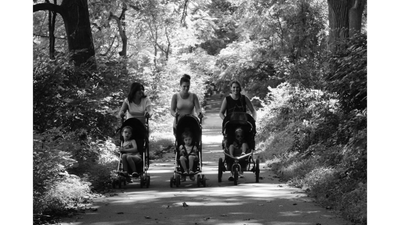What is Comfort Nursing?
What is Comfort Nursing?
by jordan berns
It may seem like your baby is attached at your nipple all the time when you first start breastfeeding. But did you know that some mothers spend even more time than that nursing their babies? Instead of using a pacifier or the cry it out method, some women elect to start comfort nursing. This means that when their baby is fussy or upset, these mothers turn to breastfeeding to soothe their babies. However, comfort nursing isn’t ideal for everyone. Read on to find out if it’s the right choice for you.
Comfort nursing or “non-nutritive sucking/nursing,” is different than nursing out of hunger. Even the suckling motions are different. When a baby or toddler nurses for comfort, the suckling motions are slower and spaced further apart; this is called “flutter sucking.”
Comfort nursing can help establish a healthy sleep schedule and even change how babies are affected by pain. Additional time spent nursing will increase your milk production and maximize the health benefits for you and your baby. If you are comfort nursing, make sure you are switching between breasts to maximize your milk production levels.
Comfort nursing may be the trick to encouraging your baby to have longer, more restful sleep. Breastfed babies sleep 45 minutes longer than babies on formula. Breastfeeding babies are also less likely to have colic. A 2008 Spanish study revealed that the amino acids that keep babies awake found in breast milk (activity neurotransmitters) were at their highest levels during the day. On the flip side, breast milk also contains tryptophan at night (Small levels of tryptophan are found in turkey, which many people incorrectly blame for their Thanksgiving haze.). Humans need tryptophan in order to survive but can’t make it themselves, so it must be digested through food. Babies can’t make melatonin like adults do to aid their sleep until they are a few weeks old; breast milk helps supplement their melatonin deficiency. Breast milk can also help babies have improved circadian rhythms (a cycle that suggests when to eat and sleep over a 24 hour day).
If your baby falls asleep while nursing, gently detach them from the nipple so they don’t develop cavities from the sustained presence of milk. Sometimes babies rely too much on comfort nursing to sleep. If this continues after the newborn stage, it would probably be best to find other ways to soothe your baby to sleep. Always be careful if you are co-sleeping while comfort nursing. There is a potential for you to fall asleep in a way that could harm a baby who has nodded off while comfort nursing.
In 2018, an Iranian experiment evaluated what method would reduce a baby’s pain the fastest and most effectively after a heel prick. They tested breastfeeding, Oral 25% Dextrose (oral glucose that can be used to reduce pain), the Kangaroo-Mother care method (babies being held with skin-to-skin contact), and EMLA cream (a type of numbing lidocaine) after being pricked on the heel. Breastfeeding showed the greatest reduction in amount and duration of pain compared to all the other treatment methods. Babies and toddlers are known to breastfeed more when experiencing growth spurts, which can be a physically uncomfortable process for them.
Some concerns people have over comfort nursing are the notions that it will spoil babies or that their baby will be overfed. Studies have shown that babies who are nursed with greater frequency show signs of stronger secure attachments. Secure attachments increase the likelihood that children will be braver and more independent as they age, because they know they have a supportive home base to return to. In terms of overfeeding, babies tend to be good at self-regulating their milk intake. Overfeeding is much more common when babies are bottle fed. When a baby comfort nurses, they do not drink nearly as much milk as when they are nursing at mealtimes due to the leisurely and less intense sucking motions.
One of the reasons comfort nursing can work is that it increases the time babies spend with their mothers. If breastfeeding on demand isn’t right for you, try carrying your baby around in a sling or wrap, which can help your baby feel connected to your body heat, heartbeat, smell, and voice.
Sometimes babies seem to be nursing increasingly often, but aren’t a healthy weight or gaining the right amount of weight. If this occurs, seek the help of a doctor or lactation consultant to ensure your baby has a good latch and is nursing correctly. If you have a proper latch and there appears to be nothing physically wrong with your baby, seek out the recommendation of your doctor to see if there is a genetic component at play or if your breast milk has a nutritional deficiency.






